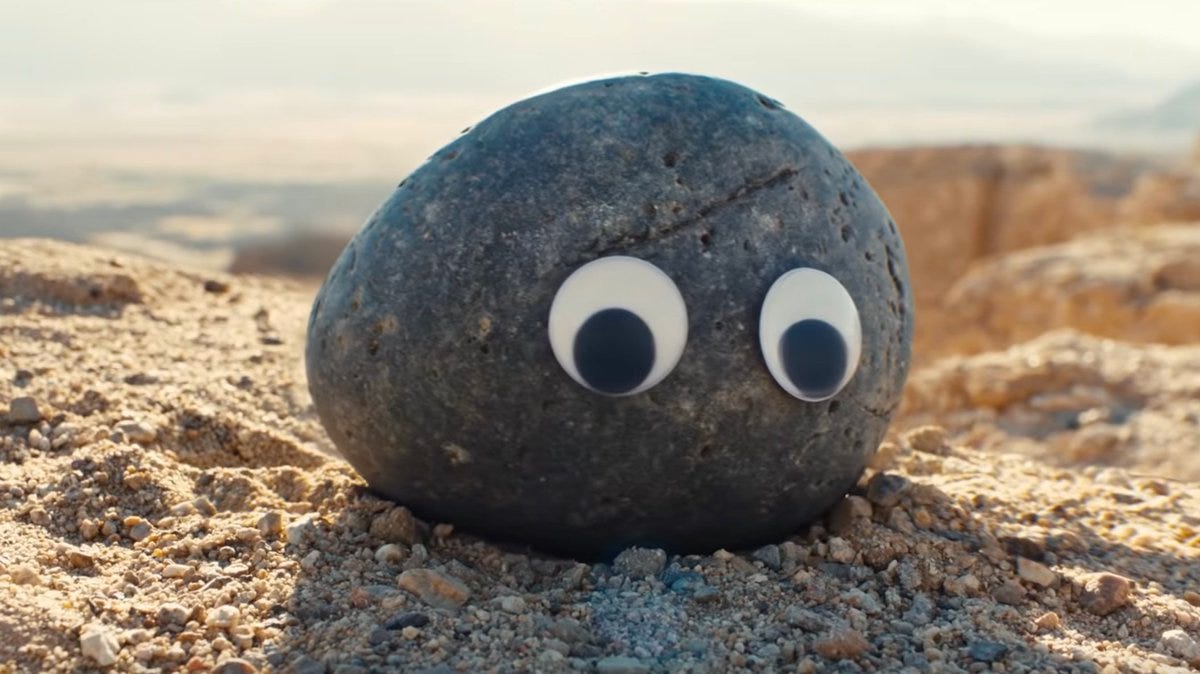Reflection
When I first started thinking about this assignment, I knew I wanted to do something with Ikea instructions. I personally enjoy building Ikea furniture, but many people consider the instructions vague or hard to follow. My first idea was to pair the unlabeled diagrams of furniture with a recipe, as the pictures would be in obvious contrast to the images. As I was looking through some options for instructions to use, I found the little characters at the beginning much more intriguing than the instructions themselves. I started to try to imagine them having a conversation. I thought about where that conversation could come from and I eventually landed on one of my favorite pieces of media: Everything Everywhere All At Once. There is one particularly striking scene where two main characters have a conversation as rocks. I started by matching the Ikea characters to the dialogue in a way I thought made sense (for example, putting a confused looking one with “Where are we?”). I then added a title page, which I altered by replacing the Ikea logo with a “Danger” sign.
For my final source, I knew that I wanted to incorporate it in place of the warnings on the second page. I was initially thinking of some kind of warning about a rollercoaster or vertigo, but instead I chose “Once in a Lifetime” by Talking Heads. I’ve known this song for many years, but it was recently drawn to my attention by my roommate, who had an experience of existential dread while listening to it. To me, it definitely feels like a song that can leave the listener disoriented. I believe the first verse does a better job acting as a warning than the other two do (it begins with and repeats “You may find yourself…”). What I take from this part of the song is that sometimes you will find yourself in new or confusing situations, but even if they are new, it’s the “same as it ever was” because we are all constantly confused and disoriented.
The dialogue from Everything Everywhere All at Once and the lyrics from “Once in a Lifetime” may both evoke a sort of helplessness that may feel overwhelming. After a first look at my project, a reader may think that the overarching message has an outlook of negativity. But this is not my intention. I believe that recognizing how unsure we are as humans is a positive thing. The idea that I think I most wanted to capture is that at the end of the day, nothing matters. But instead of this meaning that everything we do is meaningless, it should allow us to express ourselves and exist more freely. Things do have meaning, but it is all meaning that humans create for themselves. It is ok to feel stupid (such as when you are building Ikea furniture) because even as humans discover more and more about life around us, we contextualize how little we really know. In order to try and move away from “We are all small and stupid” being a negative message, I added one last set of Ikea characters, the same one that I used for my first piece of dialogue: two of them standing together, smiling. I then added the text, for now the third time, “same as it ever was,” with the goal of saying yes, we are all small and stupid, but we are here together.
I think that my work is original because these are three things that I don’t think anyone else has ever put together in this way and this combination can also change the meaning that these sources have. I do feel like this work as a whole is mine, but I would never claim ownership of the parts. I used lyrics and dialogue without changing them very much at all, and that to me did feel like some version of plagiarism. However, because I was fully acknowledging my sources and trying to use them in a creative way, I don’t necessarily feel guilty about it. I want my sources to be clear, and part of the benefit of leaving in whole verses or whole images without much change is that it’s easier to get an idea of where these things are coming from. At the end of the day, I don’t think it’s fully a plagiarism, because I am not trying to claim the work as my own or deceive anyone into thinking otherwise. My intention was to appreciate the sources I am including and to explore how they could be seen in a different context.
